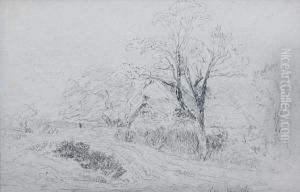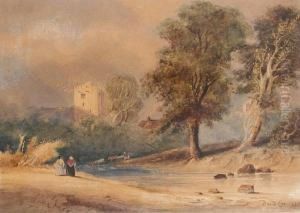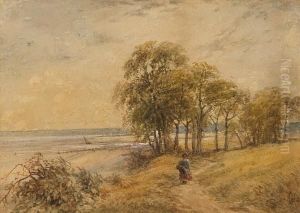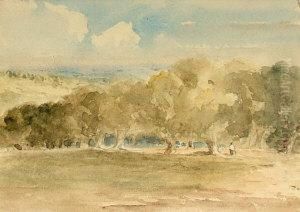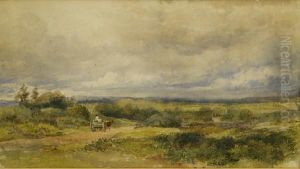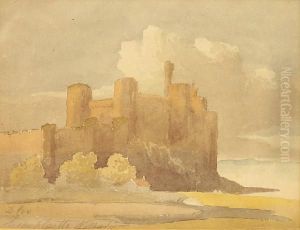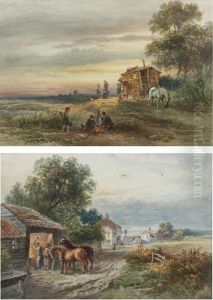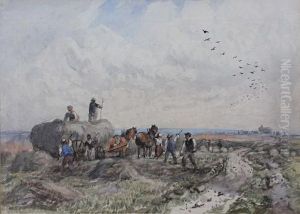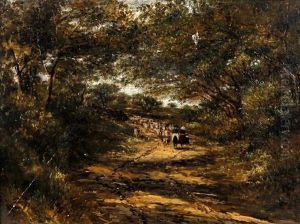David Cox Snr. Paintings
David Cox, born on April 29, 1783, in Deritend, Birmingham, England, was one of the leading landscape painters of the 19th century, associated closely with the Romantic movement. His works are celebrated for their dynamic portrayal of nature and ability to capture atmospheric effects, particularly the elements of weather within the British countryside.
Cox's early life was modest, with his father working as a blacksmith and his mother as a laundress. Despite the financial constraints, his talent in drawing was evident from a young age. Initially, he was apprenticed to a miniature painter, but his interest quickly shifted towards landscape painting. In 1804, Cox moved to London to pursue his passion, where he worked as a scenery painter for the Panorama in Leicester Square, and later, for Astley's Amphitheatre, which honed his skills in creating expansive landscapes.
Throughout the early part of his career, Cox struggled financially and worked as a drawing master to supplement his income, teaching at schools in Hereford and, later, in London. It was during this time that he began producing watercolours, which he exhibited at the Royal Academy and the Society of Painters in Water Colours, of which he became a full member in 1813. Despite his initial success, Cox did not achieve significant financial stability until much later in his life.
Cox's work is characterized by its vigorous brushwork and innovative use of colour to depict the changing moods of nature. His most productive period began in the 1840s when he moved to Harborne, Birmingham. There, inspired by the Welsh countryside, Cox produced some of his most significant works, including 'Crossing the Sands' (1851). His technique evolved from precise detailing to a more expressive style, emphasizing the transient effects of light and weather.
David Cox's influence extended beyond his lifetime, contributing significantly to the development of British landscape painting. His work paved the way for the impressionist movement by demonstrating the importance of capturing the momentary aspects of nature. Cox died on June 7, 1859, in Harborne, leaving behind a legacy that continues to inspire artists and art lovers alike.
Despite his contributions, Cox's work was somewhat overshadowed by his contemporaries, such as J.M.W. Turner and John Constable. However, in recent years, there has been a resurgence of interest in his work, with art historians and critics recognizing his role in the evolution of landscape painting and his mastery in depicting the natural world.
